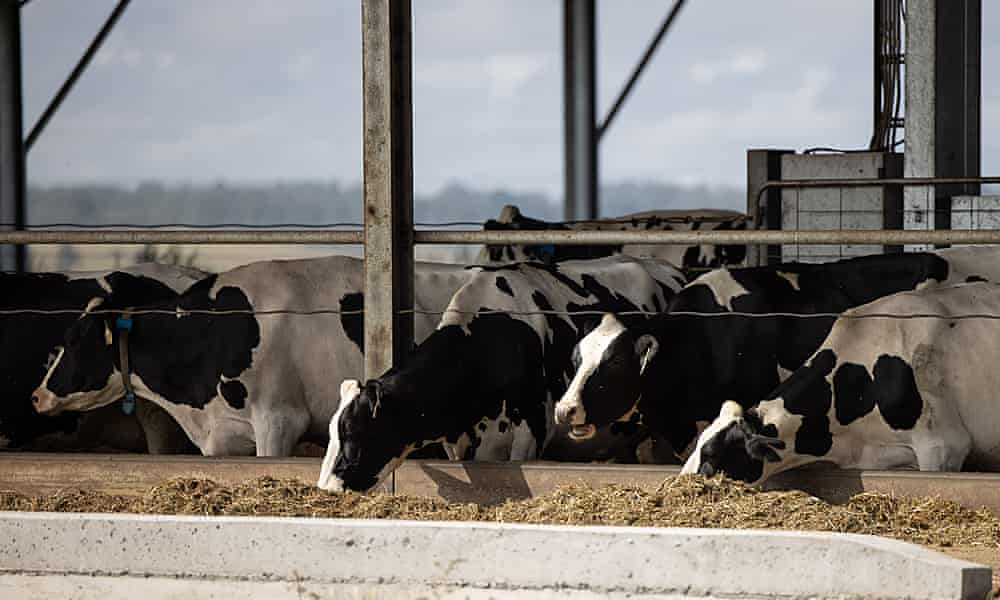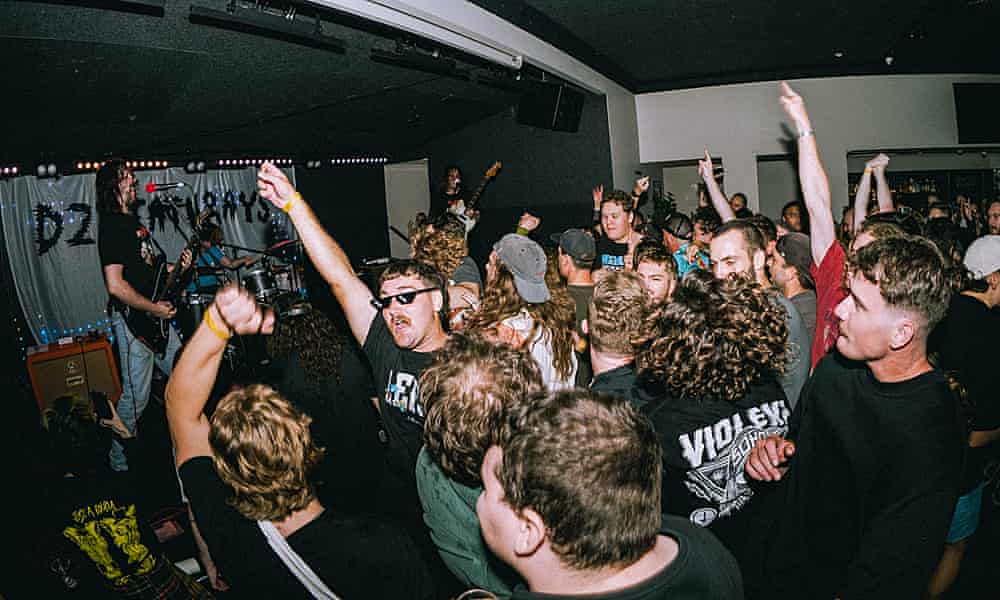|
Power independent journalism
|
|
|


| |
|
|
|
Dear reader, you can now get breaking news alerts sent directly to your inbox. Sign up here.
Newsletters may contain info about charities, online ads, and content funded by outside parties.
|
|
|
|
| |
|
| Eleven more months of worrying |
|
 |
Dear Rural Networkers,
You have to hand it to the Bureau of Meteorology. They said it would start raining again in southeastern Australia in June, and it has. At my place in central Victoria we've had just shy of 100mm so far this month – almost half of the total rainfall for the year so far. But drought-affected regions particularly in South Australia and southwestern Victoria are not out of the woods, after experiencing serious to severe rainfall deficiencies – and in some cases the lowest on record – for the first five months of the year. The long range forecast predicts above-average rainfall between August and October for everything north of the Murray and the Esperance-Port Hedland line in WA; and average to below-average south of that point.
The hay crisis won't abate until at least December, when this year's hay is cut, and there will be less of it around as paddocks are grazed down to dirt. Local Facebook pages are becoming trading posts for B-double loads of Rhodes hay shipped down from Queensland. Every conversation I have with local stock owners turns, very quickly, to a discussion of logistics. Where are you getting your hay from? Is it delivered? Can you split a truckload? Have you destocked yet?
The pressure is compounding upon industries that are already struggling, like the dairy industry. The opening milk price this month is less than the cost of production, Australian Dairy Farmers president Ben Bennett told Rural Network reporter Sandra Godwin. Anything less than $9/kg of milk solids is not enough – and the opening offer from some processors is as low as $8.40kg/ms.Bennett says:
“Some dairy farmers just won’t be able to endure this latest blow and they’ll have to exit the industry."
Victorian Farmers Federation United Dairyfarmers of Victoria president, Bernie Free, who farms at drought-affected Warrnambool, says he'd need $10kg/ms to cover cost rises even before the drought.
“We’re going to be short of grass fibre to feed our cows all the way through until the autumn break next year, and we’ve got 10 or 11 months of worrying about where we’re going to get feed for our cows.”
It's not the only industry under pressure: the value of the vegetable sector dropped $140m this year, according to data released by the Australian Bureau of Statistics last week, despite production lifting by 250,000 tonnes. The National Farmers Federation argued that this result is another reason to implement the recommendations of the Australian Competition and Consumer Commission's supermarkets inquiry, which includes a recommendation that major supermarkets should be forcibly broken up if they engage in anti-competitive behaviour. The latest Choice supermarket survey found that shoppers in Western Australia are paying more for groceries than those on the east coast. Meanwhile, analysis by JP Morgan found prices at Woolworths and Coles were 8.6% and 8.2% higher than competitor Aldi – useful information for those with access to an Aldi; less useful for those in the regions.
In other news, the NSW budget on Tuesday included funding to establish a proposed Hunting Authority, part of a deal with the Shooters and Fishers party to promote "conservation hunting" in state forests and crown land in exchange for the minor party's support on other legislation. The legislative council on Wednesday sent the legislation to committee, to report back on 10 October.
And finally, residents in the northern Queensland town of Greenvale are still awaiting a response from the Airforce two years after they were shaken – literally – by a loud shockwave from an RAAF F-35 fighter jet which shattered windows, smashed light fittings and shook roofs. Reporter Andrew Messenger spoke to locals who described hearing a "massive noise" on 26 June, 2023. Said Dinka Marovic, who works at the local pub, the Three Rivers hotel:
“Some ran to the gas bottle thinking that the gas bottles blew up. I thought that a semi had hit the front of the pub … we came all back together, and that’s when we noticed the ceiling starting to come down.”
You can read Andrew's story here.
Until next time,
Rural and regional editor
Calla Wahlquist |
| Across the (music) landscape |
|
 |
There is a strange fracturing happening in the music scene. Large stadium tours sell out in seconds and live forever in vertical video clips on social media. But the small to medium gigs – the tours of regional cities and country towns that have long been a lifeline for rural teens and local bands alike – are struggling.
Hand-in-hand with this decline is a decline in people finding local bands. Growing up in the country in the '90s and early 2000s, we found bands on Triple J. My sister used to print the playlist for the Net 50 on Saturday night and sit by the radio with a finger on the record button, ready to capture her new favourites on tape. We would attend gigs and make sure to catch the support acts, so we could buy an EP from the bassist after the show and appear cool and knowledgeable the next time someone leafed through our huge CD wallet at school. Now people discover music on Tiktok, or Spotify, and rarely commit the artist to memory: it's just an automatically-generated playlist.
I sound like vintage John Cusack but this High Fidelity monologue has a point: it's hurting both Australian artists and the cultural life of regional communities.
As Jack Tregoning writes, artists are white-knuckling their tour dates hoping that last-minute ticket sales will be enough to cover their costs. Brisbane rock band DZ Deathrays told their social media followers in February that they'd been advised to cancel a planned gig at the Theatre Royal in Castlemaine, central Victoria, due to lack of ticket sales.
They wrote:
“We’ve decided to run the risk of ruin and continue the show for those who have already bought tickets, but it’s unfeasible to run this model much longer.”
Later, the band's drummer Simon Ridley told Jack:
“It’s a lot having a thing on sale for three months and having to wait right until the end to figure out whether it was worth it or not… It’s just gambling, and some people don’t want to gamble.”
You can read Jack's full story here. |
The climate crisis could trigger "substantial" production losses to staple crops including maize, soy, rice, wheat, cassava and sorghum, a new study by the University of Illinois Urbana-Champaign has found.
The study, led by environmental economist Andrew Hultgren, found yields of staple crops could fall by as much as 120 calories per person per day for every 1C the climate heats up, even if farmers adapt to worsening weather.
He said:
“In a high-warming future, we’re still seeing caloric productivity losses in the order of 25% at global scale. It’s not as bad as a future where adaptation doesn’t happen at all, but it’s not this rosy ‘agriculture is going to benefit from climate change’ kind of picture.”
You can read the full story, by Europe environment correspondent Ajit Niranjan, here. |
| Enjoying this newsletter? |
|
|
A message from Lenore Taylor, editor of Guardian Australia
I hope you appreciated this article. Before you move on, I wanted to ask whether you could support the Guardian’s journalism as we face the unprecedented challenges of covering the second Trump administration.
As the world struggles to process the speed with which Donald Trump is smashing things, here in Australia we regularly wake to more shocking news. Underneath it is always the undermining of ideas and institutions we have long deemed precious and important – like the norms and rules of democracy, global organisations, post-second world war alliances, the concept that countries should cooperate for a common global good or the very notion of human decency.
This is a moment the media must rise to, with factual, clear-eyed news and analysis. It’s our job to help readers understand the scale and worldwide ramifications of what is occurring as best we can. The global news-gathering and editorial reach of the Guardian is seeking to do just that.
Here in Australia, our mission is to go beyond the cheap, political rhetoric and to be lucid and unflinching in our analysis of what it all means. If Trump can so breezily upend the trans-Atlantic alliance, what does that mean for Aukus? If the US is abandoning the idea of soft power, where does that leave the strategic balance in the Pacific? If the world descends back into protectionism, how should a free trading nation like Australia respond?
These are big questions – and the Guardian is in a unique position to take this challenge on. We have no billionaire owner pulling the strings, nor do we exist to enrich shareholders. We are funded by our readers and owned by the Scott Trust, whose sole financial obligation is to preserve our journalistic mission in perpetuity.
Our allegiance is to the public, not to profit, so whatever happens in the coming months and years, you can rely on us to never bow down to power, nor back down from reporting the truth.
If you can, please consider supporting us with just $1, or better yet, support us every month with a little more. Thank you.
|
|
|
|
Lenore Taylor
Editor, Guardian Australia
|
|
|

|
|
|

|
Manage your emails | Unsubscribe | Trouble viewing?
|
| You are receiving this email because you are a subscriber to The Rural Network. Guardian News & Media Limited - a member of Guardian Media Group PLC. Registered Office: Kings Place, 90 York Way, London, N1 9GU. Registered in England No. 908396 |
|
|
|
|
|